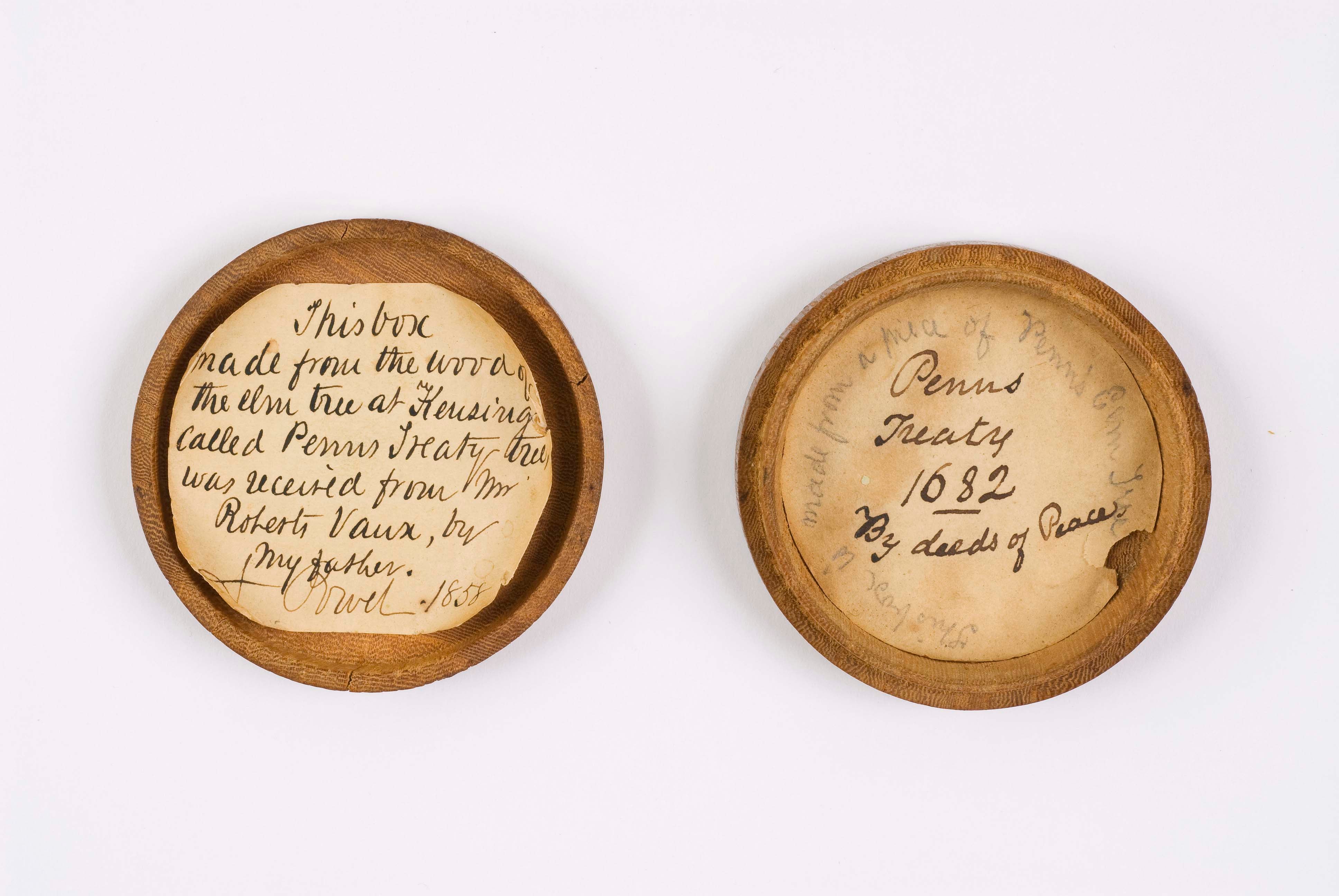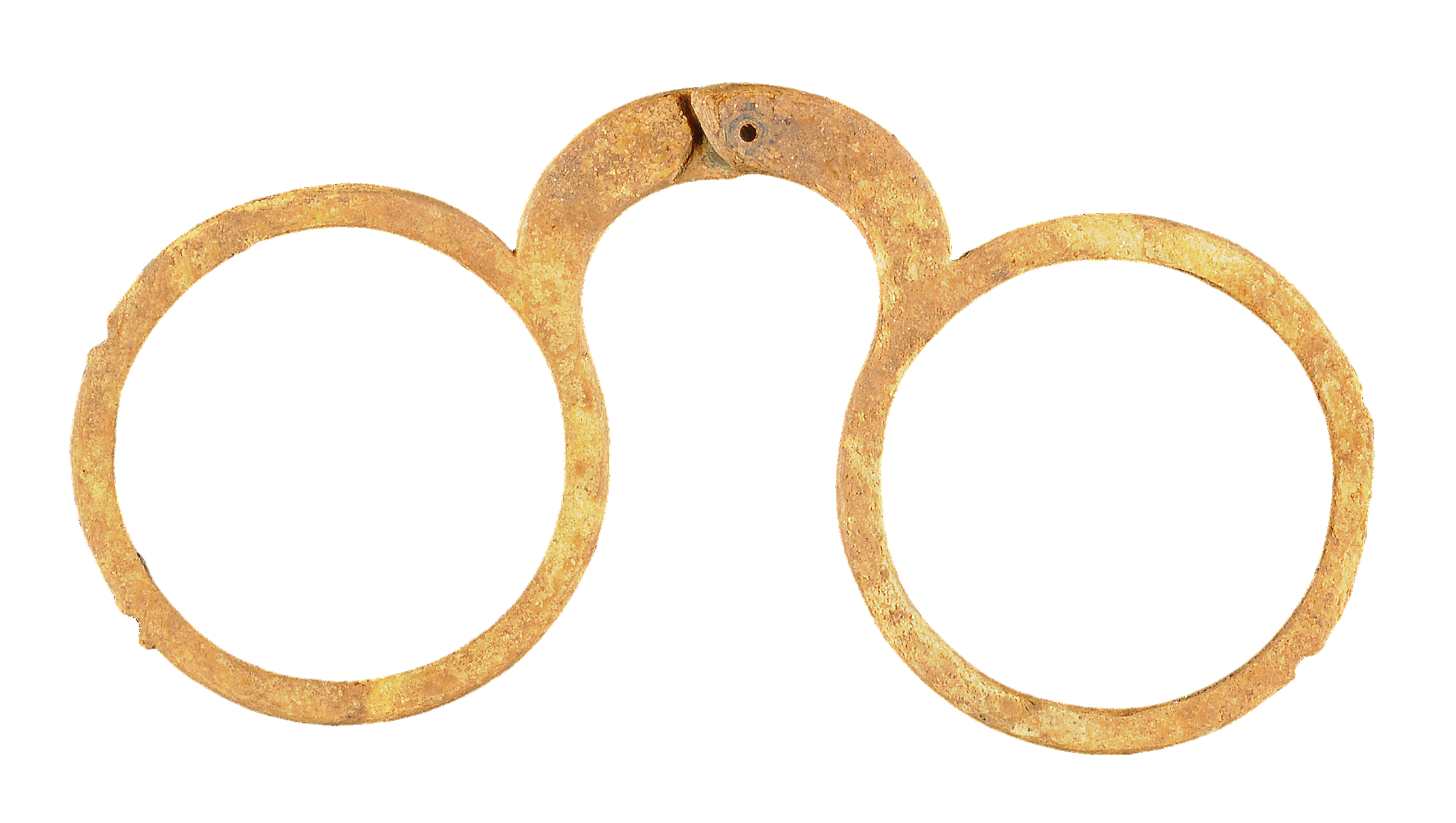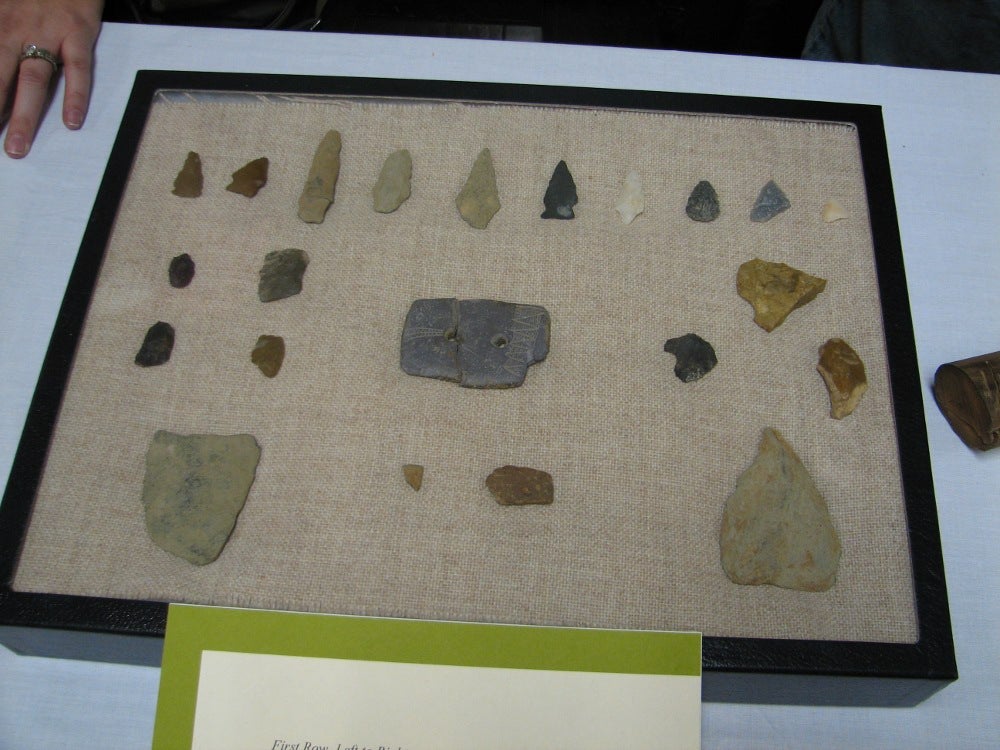Planning underway for a new river wards history museum

The Native American, colonial and industrial artifacts discovered during I-95 construction through the river wards and a collection of documents and objects commemorating the Treaty of Friendship signed between William Penn and Lenni-Lenape Chief Tamanend in Fishtown may together share a permanent home.
“It will be within three or four years,” said Steve Tull, who is both a board member of the currently online-only Penn Treaty Museum and vice president of archeology and architectural history for URS Corporation, which has done the federally required archeology work that has unearthed thousands of years of history during the on-going Revive 95 project. “We don’t want it to wait.”
Penn Treaty Board Members – and anyone else with interest and/or expertise they can recruit – have launched the effort to build The Penn Treaty Educational Institute. The institute would contain the history of the people of what is now Fishtown, Kensington, Northern Liberties, Port Richmond and other riverward communities, Tull said. Penn Treaty is the perfect name for an institution that will highlight local history from the Lenni-Lenape and other native tribes who lived or traveled here, to the arrival of Europeans and their interactions, to the building of a new nation, he said.
Encapsulating thousands of years of local history into modern displays would allow students from elementary to the graduate level to do research there, Tull said. In addition to physical objects, the institute would contain detailed catalogs of every object and digital, interactive maps and other information, he said. A website with some of the digital components is expected to be finished by late summer, he said.
“We need to try and get people moving into (these areas today) to understand they really have a densely layered history,” he said. “They are just the latest point on a 4,500 year old continuum of people who lived right here to do some kind of work.”
John Connors founded the on-line Penn Treaty Museum, which includes histories of the Lenni-Lenape, the Tamenend-Penn Treaty, and the more than 100 years’ of the effort of Philadelphians to preserve that history, in part through Penn Treaty Park. The website also displays images of the photographs, documents and objects that would be on permanent display at a future Penn Treaty Educational Institute. The Smithsonian has asked to borrow one object – a wooden box carved from the wood of the Treaty Elm Tree beneath which the treaty was said to have been signed – for a multi-year exhibit on treaties. The Great Elm fell in a storm in 1810. (Read about the 2010 anniversary here.)
Connors became an advocate for Penn Treaty Park in the 1970s almost by accident – he was trying to get baseball fields built. He learned the story of the treaty of friendship and peace, and of efforts to preserve the area where the treaty took place, from the generation of Penn Treaty activists before him, and has spent about 25 years collecting the museum items.
Since 2007, Connors has sporadically held showings of the Penn Treaty items he’s collected in a building he owns near the southwest corner of Columbia Avenue and Delaware Avenue. Tull says this building, once renovated and outfitted with climate-control displays and other technology, will likely be The Penn Treaty Educational Institutes’s first home.
Connors said he never thought his building would be a museum, but Tull makes a convincing argument: The building is in Connors’ control, it’s across the street from the park, and it is near the foot of Columbia Avenue, which is being landscaped and lighted into a gateway between Fishtown and the riverfront. Part of that effort will include Lenape-themed artwork by Donald Lipski.
It was in 2007 that Connors asked Tull, who was then involved in archeology work down the street at SugarHouse Casino, to be on the museum board.
Turns out Tull’s ancestor, Kensington shipwright John W. Tull, was advocating for the city to create Penn Treaty Park in the 1750s.
The Master Plan for the Central Delaware Waterfront calls for museum space, potentially at the old PECO building adjacent to the park.
Connors and Tull agree with the Delaware River Waterfront Corporation (DRWC) – the quasi-city agency that oversees the master plan – that the old PECO building would be perfect for such an institution. It’s after all adjacent to the very place where Native Americans and Penn and the Quakers met in peace, he said.
But Excelon Corp. is still using the PECO building.
“Exelon Generation‘s Delaware Station continues to be an active generating site. In addition to hosting four combustion turbines with a capacity of 56 megawatts, the old Power House building houses active transmission equipment, “Exelon spokesman, Timothy Wirth told PlanPhilly in an email. “At this time Exelon Generation has no plans to retire the site; however, we understand the importance of the site to the Delaware River Waterfront Corporation and to the City of Philadelphia.”
Regardless of their future setting, Tull says he doesn’t want the artifacts and the scholarly documentation that interprets them sitting in boxes or on a shelf somewhere – he’s seen that happen too often.
PENN TREATY MUSEUM MEETING:
Thursday, May 16, 6-8pm. 900 East Columbia Avenue (southwest corner of Columbia and Delaware)
When asked how much the project will cost, Tull said the cost analysis hasn’t been done yet. The board is still working on the “buy-in” phase. To that end, it will hold a meeting from 6 to 8 p.m. May 16 at the museum’s potential first home, the building at the southwest corner of Columbia and Delaware avenues. Archaeological finds and Penn Treaty Museum artifacts will be shown, as well as a preview of the artifact website. Experts from local historical and educational organizations have been invited, and so is the public.
The Pennsylvania Museum and Historical Commission is in charge of overseeing the archeology work on the I-95 project. Artifacts often are stored at the state museum in Harrisburg, but Tull said he and his company have personally been involved with projects that showcase local history where it is found, including The King of Prussia Inn. He said PHMC has indicated a willingness to work with the museum project.
PHMC Spokesman Howard M. Pollman said PHMC ‘s would have to make sure artifacts could be properly preserved and cared for before allowing them to stay local, but they organization is always open to those discussions. “Obviously, this is something that is part of this community’s past. This is their history,” he said.
URS – in partnership with DRWC, the Central Delaware Advocacy Group and other organizations – has held annual showings of the artifacts found, some of which stretch back to 2500 BC. These include Native American stone tools and a decorated amulet, household items discarded in background privies in Colonial times, and remains of the glass and shipping industries.
Fishing hooks, scales and turtle bones have been found at the homes of fishermen and remnants of firehoses and fire hats where fire fighters once lived. Evidence of glass making was not only found near Dyottsville Works, but from places where glass workers used to live. These artifacts included decorative items such as a glass cowboy hat and glass canes.
Tull learned that glass canes were presented by glass blowers to the mothers of daughters they were courting. “This is the kind of things we are trying to get at through the material objects,” he said. “We want to know what they valued, how they look at the world.”
Every presentation of the artifacts, including one extended exhibit at the Independence Seaport Museum, has been popular. There will likely be another this fall, Hull said.
This doesn’t surprise Sandy Salzman, executive director of the New Kensington Community Development Corporation, who is also working to make the museum happen. “We’ve always wanted a historic museum in the neighborhood,” she said. River ward residents have often felt their history has gone uncelebrated, especially when compared to the colonial history that is highlighted in other city neighborhoods. Salzman hopes the museum will also highlight the various ethnic groups that worked along the river and settled in its neighborhoods, from Irish to Polish to German and others.
Penn Treaty Museum Board Member John Norwood, a pastor who is also a councilman and Principal Justice of the Tribal Supreme Court of the Nanticoke-Lenapi, said the effort to create a history museum that showcases the lives of his ancestors, the treaty of friendship they signed with the colonists, and the events that followed, both good and bad, is important.
He calls the treaty the highlight of “that brief period of time where there was an attempt to live in peace and harmony.” Some good came out of it, he said. His branch of the Lenapi, based in New Jersey, still enjoy a strong relationship with the Quakers. The museum must speak of the betrayal of the treaty by Penn’s own son, who broke the treaty when he cheated Native Americans out of their land, Norwood said. But it should also present the ideals of the treaty as a current goal. “It was certainly a dream, an aspiration that we still need to aspire to,” he said
“Having all the artifacts together and intermingling is a beautiful thing,” he said. “Pluralism was the intention.”
WHYY is your source for fact-based, in-depth journalism and information. As a nonprofit organization, we rely on financial support from readers like you. Please give today.







